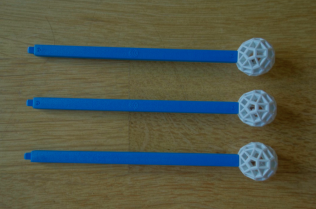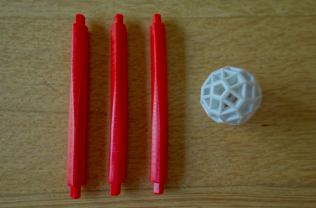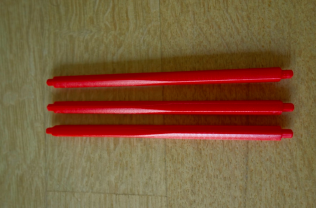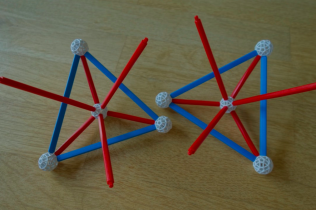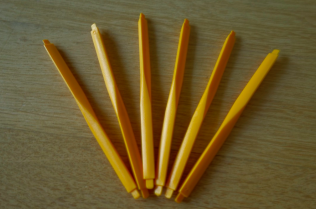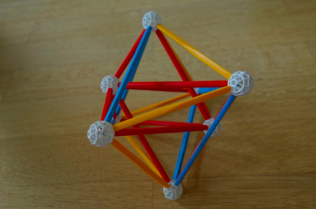A ZOMETOOL MODEL OF A 16 CELL
Here we describe how to build a projection of the 16 cell, one of the six regular polytopes in 4-dimensional space, using the zometool system. For the model you need
- 8 balls,
- 6 long blue (b2) struts,
- 6 long red (r2) struts,
- 6 medium red (r1) struts,
- 6 long yellow (y2) struts.
Of course one can scale down the model to b1-r1-r0-y2, but this becomes quite tiny.
For further information and instructions you might also wish to consult one of the following webpages:
The pictures below were taken by Eva-Maria Gassner.
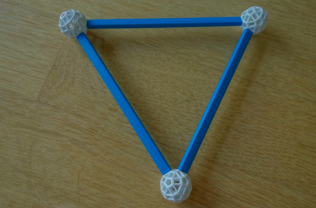
Step 1
Use 3 of the blue struts to build a regular triangle.
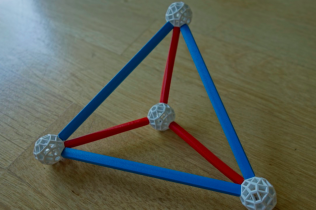
Step 2
Use 3 of the medium red struts to build a pyramid on top of the blue triangle constructed in step 1.
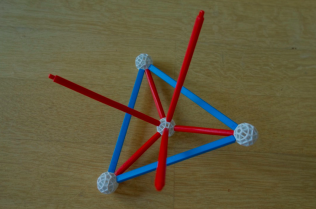
Step 3
Use 3 of the long red struts and mount them regularly spread and inwards pointing at the vertex constructed in step 2.
Step 4
Duplicate the construction.
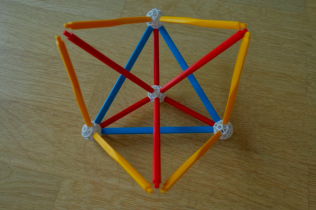
Step 5
Use the yellow struts and mount them on the vertices of only one of the blue triangles. Mount them in such a way that each time two of the yellow struts meet at the loose end of a long red one.
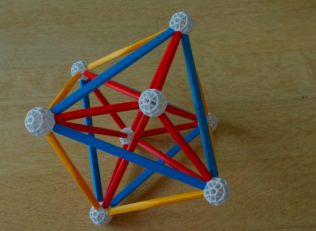
Step 6
Complete the model by mounting the second construction from step 4 on top.
This Zometool model of the 16 cell shows all of the 16 tetrahedral cells, but they appear differently squashed as a result of the projection. Moreover, in contrast to the vertex-first projection all of the 8 vertices and all of the 24 edges are visible in this projection. The central vertex from the vertex-first projection (which has two pre-images) has now split into two. Also note how this has led to a split of the edges and the tetrahedral cells.
This model is connected to the other two models (see here and here) by the Zometool Triality.


